Giants of Science
Introduction
Hello everyone,
My name is Alex and I wrote this eBook in ninth grade! Crazy right?!
Well I just like to inform about different stuff. For my first book I chose the science topic because I find it important
that young people at least know about these great scientists I wrote about.
FYI it took me about one year to finish this book so I hope you appreciate my work!
If you need more info about the desired scientist just click on this symbol (...) at the end of every text (if there is one).
Right below the introduction you'll find a list of the chronological order of my book. By clicking on a headline you'll get to its position and can start reading directly.
Enjoy!
Table of Contents
Archimedes Pythagoras Leonardo da Vinci Isaac Newton Charles Darwin Picture-sourcesArchimedes of Syracuse
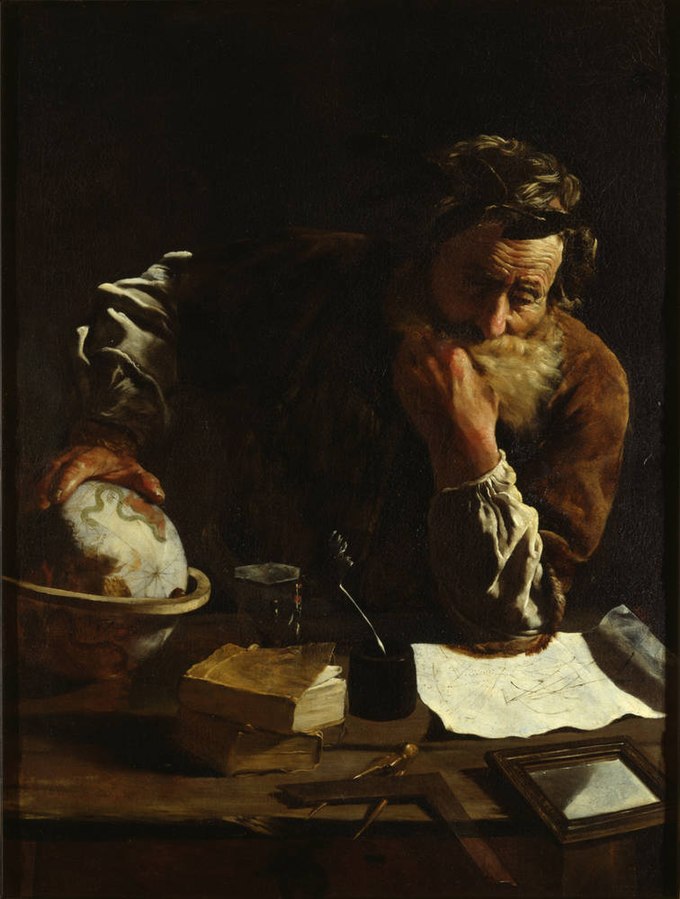
- Lived from 287 BC to 212 BC for 75 years
- Born in Sicily, slain by a Roman soldier
- Was a Greek mathematician, physicist, engineer, astronomer and inventor
Inventions
Law of the lever

Archimedes once said: "Give me a lever which is long enough and I shall lift the whole world." This law basically says that the longer the lever the lower is the strength required to lift the object.
...Archimedes' screw
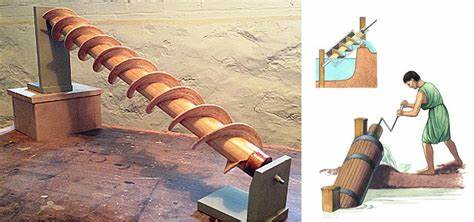
It was a device that could easily raise huge amounts of water. It has the shape of a revolving screw-shaped blade which moves the water.
...War-inventions
Fun Fact
Both of the coming inventions helped Archimedes' people to be successful and feared by their enemies.
The Claw

The Claw was a huge crane-like device which was used to sink the ships of the opponents. A huge metal-claw was dropped onto the ships and then pulled up again. During the pull out most of them fell into the water and sunk. Archimedes used this method as a defensive weapon when his city Syracuse was attacked and sieged by the Roman Republic.
...The Heat Ray
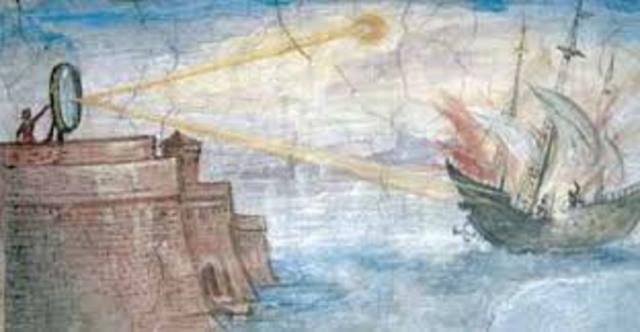
The Heat Ray was used in the same purpose as the Claw -to defend Syracuse. The idea was to focus gigantic mirrors onto the hostile ships so that they catch fire. Also Archimedes improved both accuracy and strength of catapults. He even developed catapults with higher reach and speed.
... Back to Table of ContentsPythagoras the Philosopher
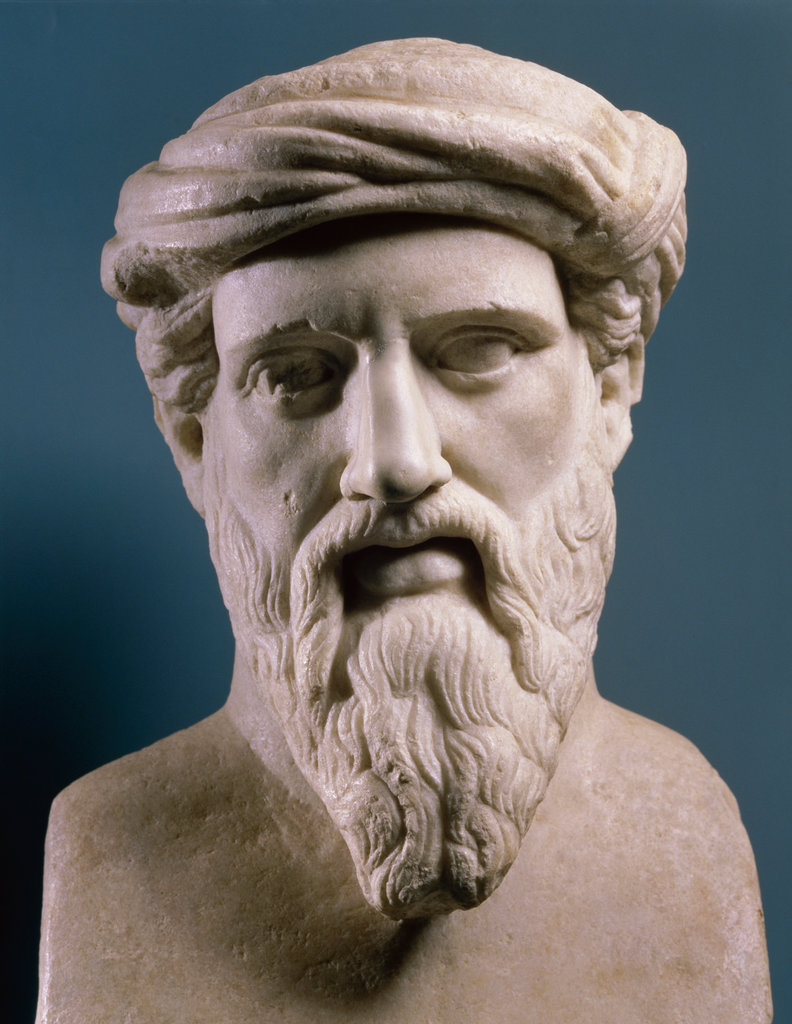
- Lived from 570 BC to ca. 500-490 BC
- Born in Samos, Ionia (Greece), deceased in Metapontum, Lucanium (Italy)
- Was a Greek philosopher and mathematician
Inventions and Teachings
Metempsychosis
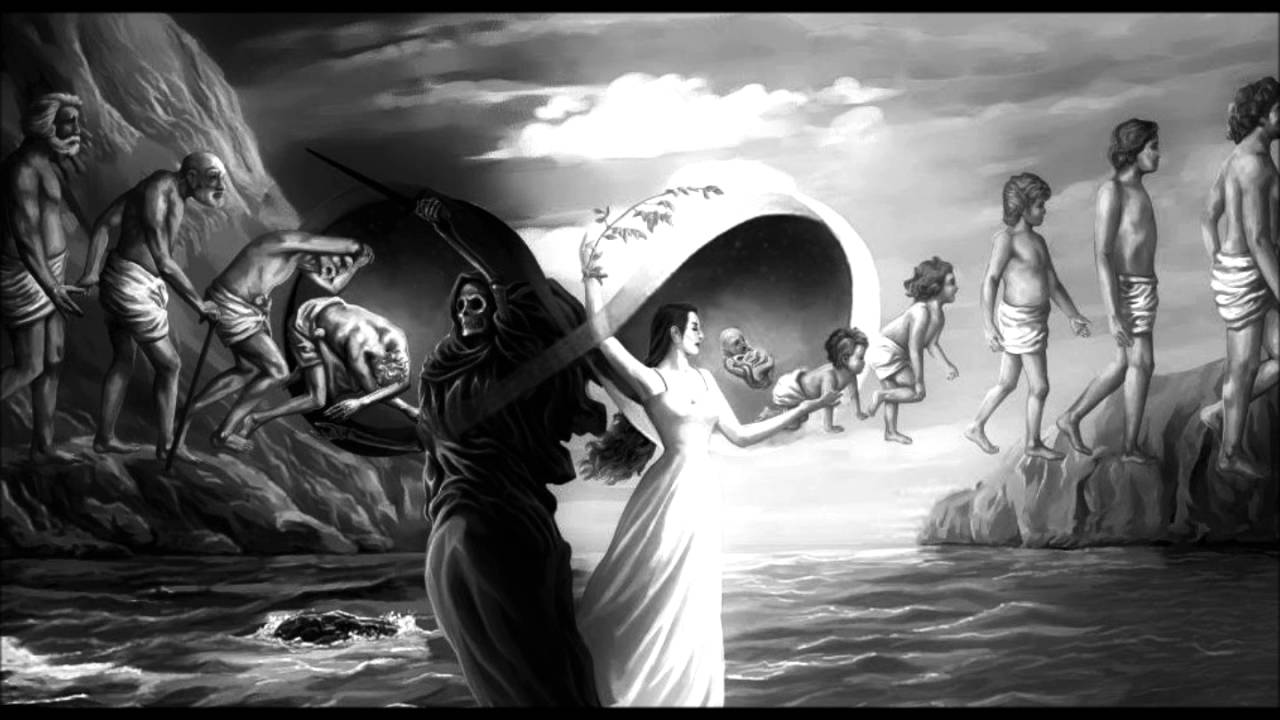
Metempsychosis is a teaching of Pythagoras which explains that when a living body dies, its soul transfers itself into a new body and continues to live with it until it deceases. This method is called "incarnation". There is even a saying which tells that Pythagoras the Philosopher himself could remember four of his incarnations, but that's just a myth.
...Cosmic Finds

Pythagoras reinvented the way that we think of the solar system and whatever lies beyond it. He once said that how the stars move and how the planets interact is a mathematic system which could be calculated. With him living in ancient Greece such a theory was new to the world and not as welcomed as it is in the modern period (now). Many other great minds like Leonardo da Vinci followed his example and even proved it with telescopes and other modern inventions.
...The Belief in Numerology

The Pythagoreans who were a group of people dedicated to numerology had the belief that everything in the universe is constructed with numbers and that specific numbers even had a special meaning. For example they thought that the number 3 represents perfection because it has a beginning a middle-part and an ending. Or the number one which was used as a synonym for the beginning of all things.
...The Pythagoreanism
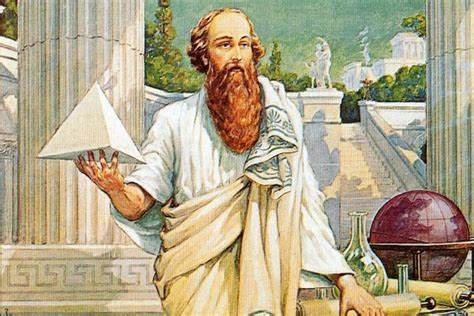
The Pythagoreanism also called communal lifestyle was a new invention of Pythagoras. It was a lifestyle in a sect where you had to share and do everything with your fellow sect members. Living together, playing together, spending your free time together - literally everything you owned. There were two groups of this organization: their "mathematikoi" and the "akousmatikoi". Translated: The learners and the listeners. The learners dedicated their life to inventing, studying and discussing things intellectually while the listeners focused on mythology and the "old beliefs". The two groups were pretty different but one thing they had in common - sharing their possessions and making compromises for each other.
... Previous: Archimedes Back to Table of ContentsLeonardo da Vinci
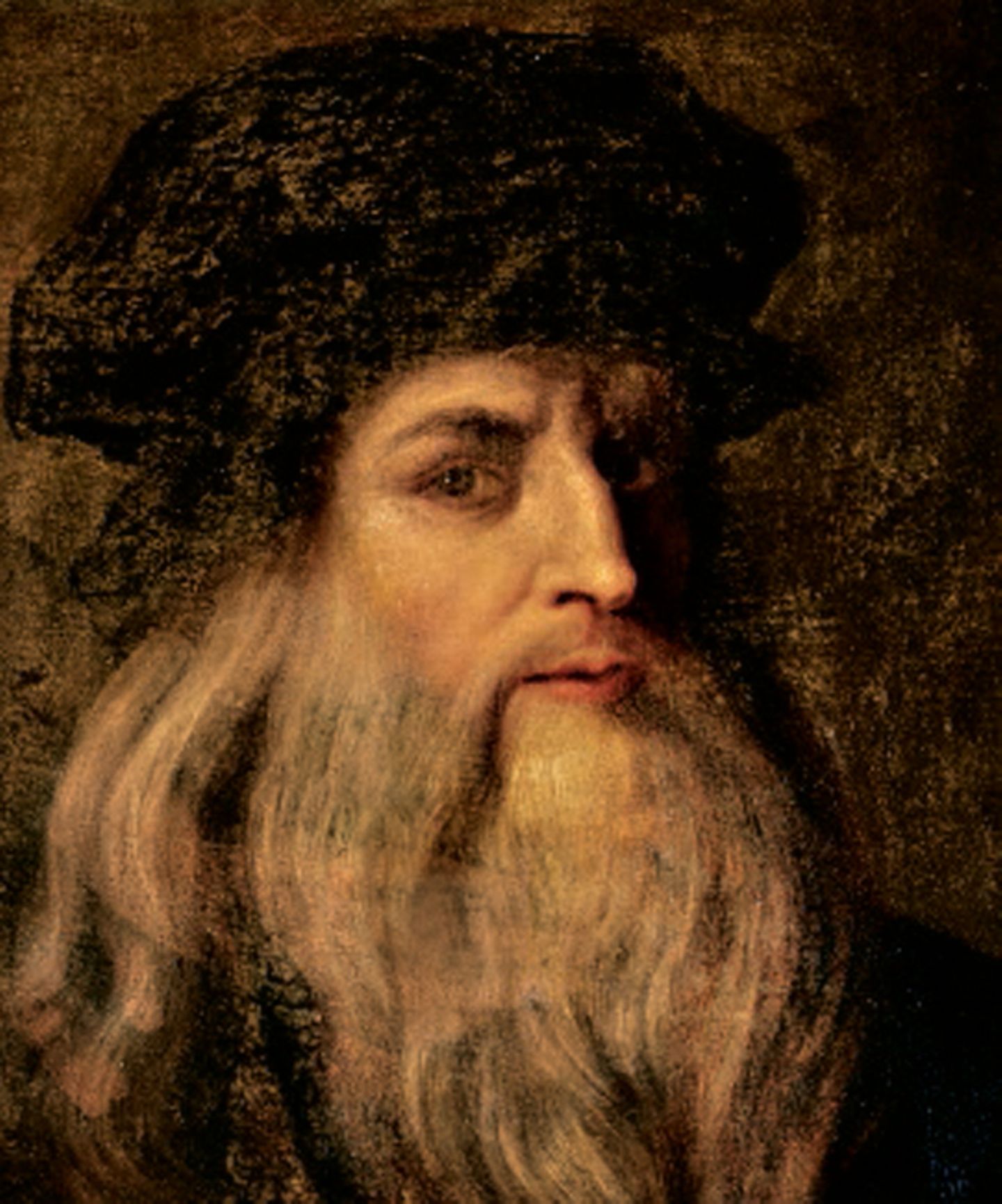
- Lived from 1494 to 1498
- Born in Anchiano, Toscana, Italy deceased in the Clos Lucé castle, Amboise
- Was an Italian inventor, artist, nature philosopher, anatomist and much more
Inventions
The idea of the "flying machine"
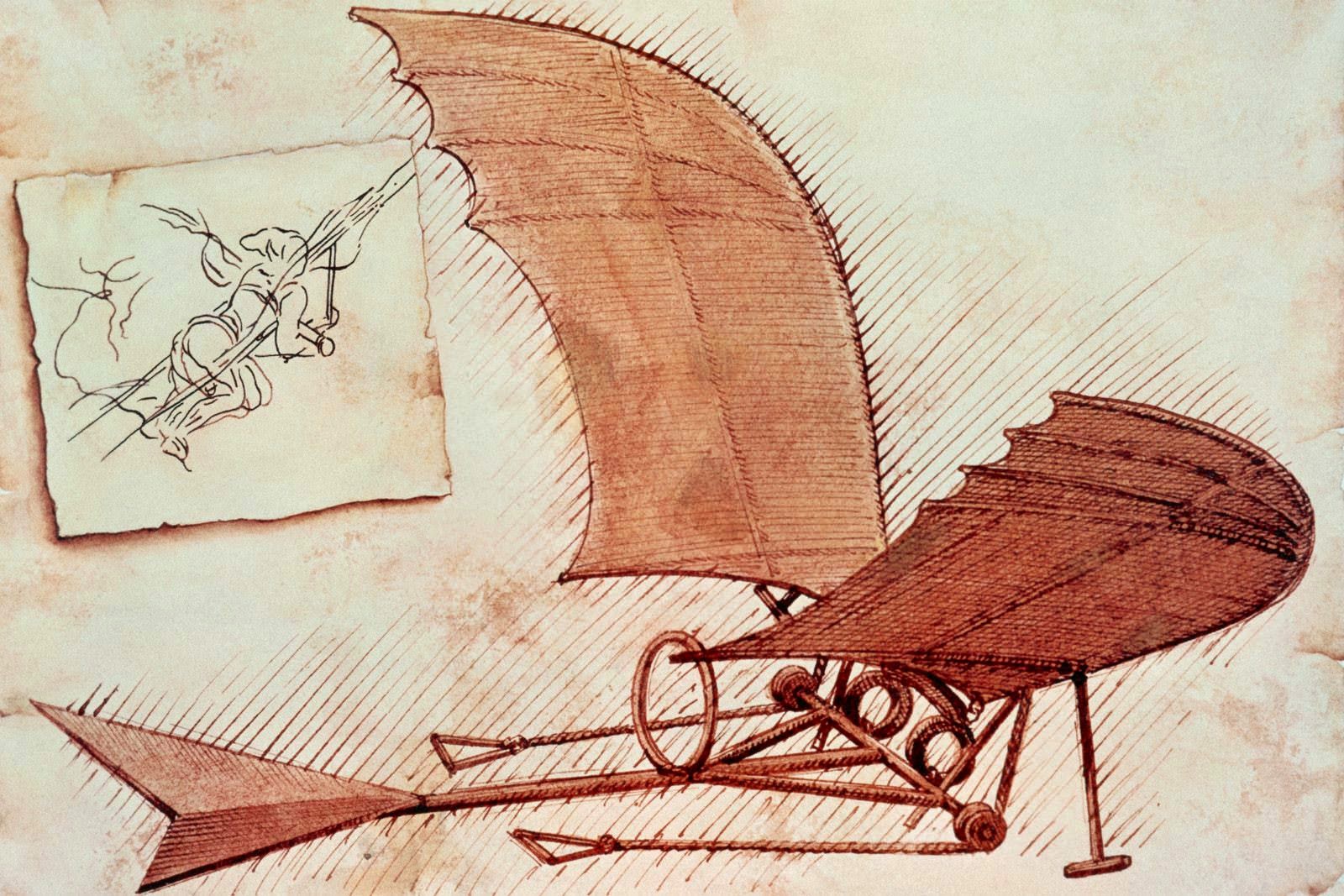
Da Vinci's idea was to invent a device with that a human could fly like a bird. Sources proof that in his young years Leonardo watched a hawk fly. That gave him the idea of inventing a flying machine. Like many of his inventions he wrote them down in a personal notebook. The device he drew had already had the shape of a modern plane with the only difference that it was designed just for one person. It had two wings which were attached to the main-body of the flying machine. The pilot was supposed to lay down with his head showing to the ground. He would have used his hands to control the wings with the help of two levers near his arms. Sadly the machine was never tested. Nevertheless it was a milestone in flight mechanics. ...
Early machine gun
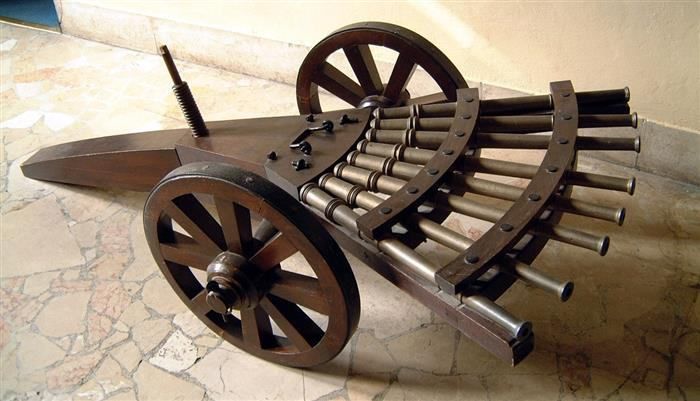
The great mind also invented an early version of the machine gun. He saw a problem with cannons - you can't fire multiple projectiles at once. So in order to change that he constructed a fan-like cannon which didn't require much loading or cooling time because of the huge number of openings which allowed the machine to fire without any breaks.
The Triangle parachute
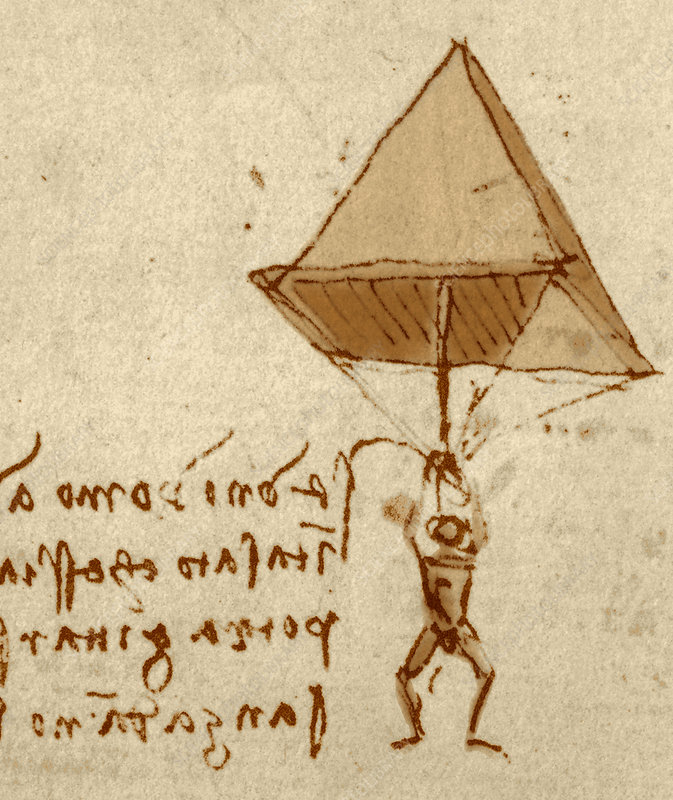
The triangle parachute got its name from its shape. It is formed like a 3D model of a triangle and was also found in Leonardo's notebook. Due to its special shape it managed to provide the user with a safe flight till the ground. After the triangle parachute was rebuilt by a hobby paraglider he said that it had an even more fluent feeling than the common parachute. Again it was not tested in da Vinci's period of time.
Anatomy Studies
Impact on Modern Science
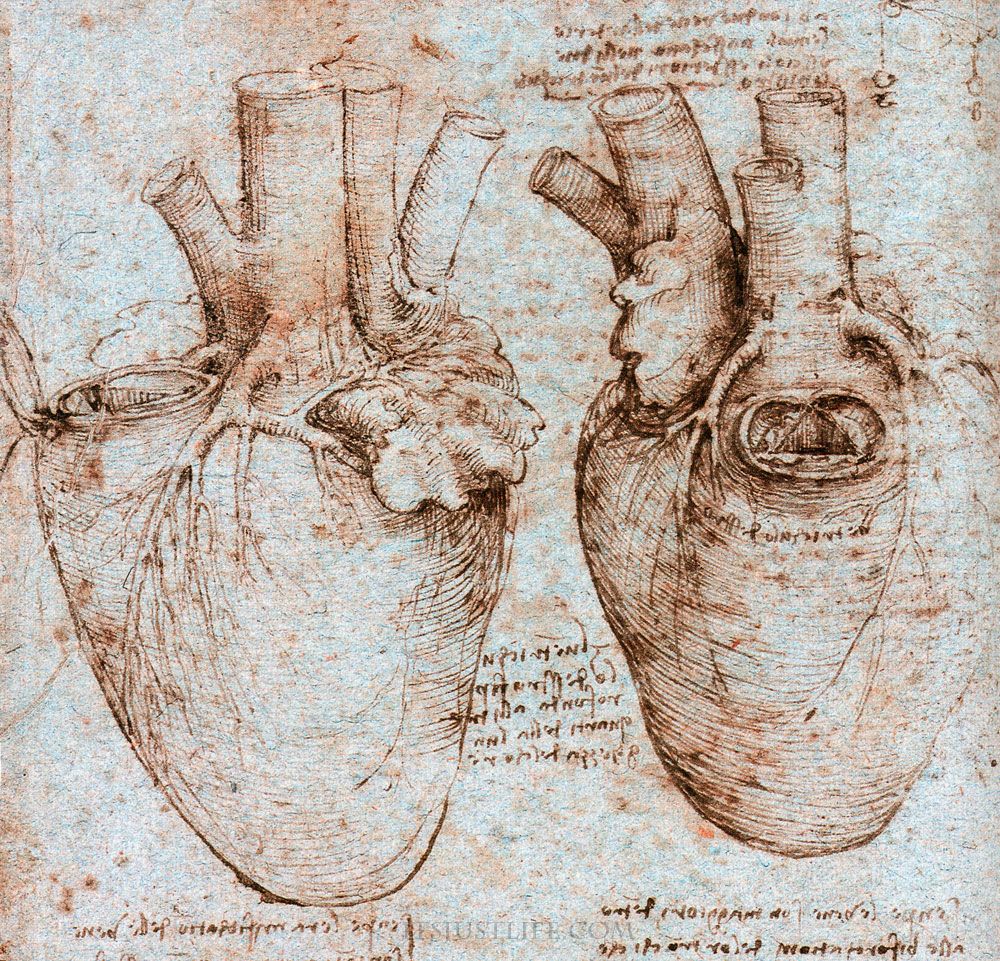
The time when da Vinci lived he never published any of his anatomy papers. Interestingly though was the special way of how he drew on his papers. Every time Leonardo da Vinci drew a body or any kind of organs he made sure that it was in different layers. This way you could see everything from organs to the human skin on one paper. This method is still used in modern science and it is a huge help for the understanding of the human body.
...The Vitruvian Man
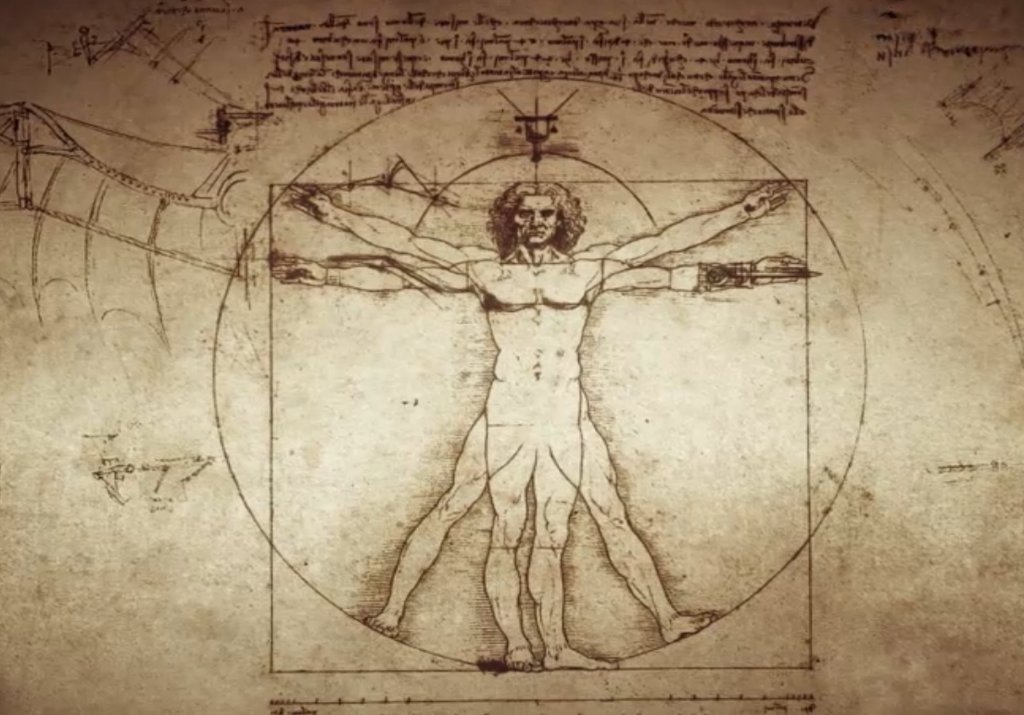
At first: Where did the name Vitruvian Man come from? To answer this particular question one has to know that the Vitruvian Man was created with the help from the thoughts of the 1st-century-BC Roman architect Vitruvius. In his drawings da Vinci wrote that and drew that the human body is equal to a circle and a rectangle when his arms and legs (stretched) are in a certain position. We can detect this drawing on some coins and on the German public health insurance (AOK)-card. In this case the insurance promises to keep your body in shape and good health. This work from Leonardo da Vinci was the only anatomic one he ever published.
...Artworks
Mona Lisa (1503-19)
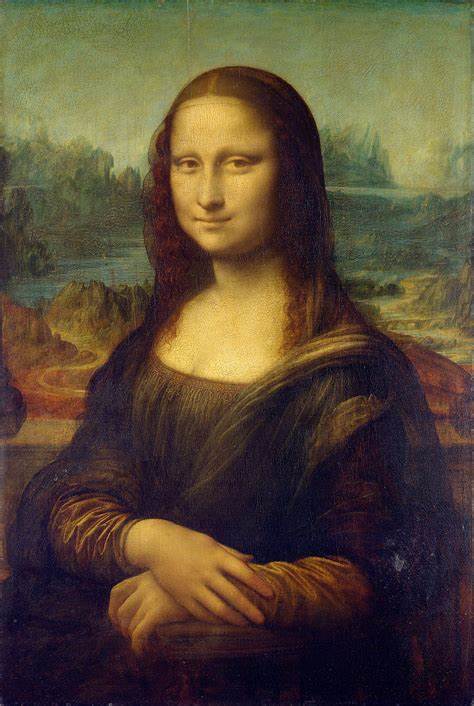
The Mona Lisa was one the most famous paintings Leonardo da Vinci ever drew. To finish this work he needed 16 years. The painting can be found in the Louvre museum in France. Lots of people say that the Mona Lisa is special in her own way. It is her smile which isn't normal like any other paintings. Leonardo works with shadows and other transitions to make the face and other body parts look different for any person. This style of drawing effectively shows the determination, perfectionism and patience Leonardo da Vinci works with. The highest price in an auction for the Mona Lisa is currently US$ 450.3m.
...The Last Supper (1495-1498)
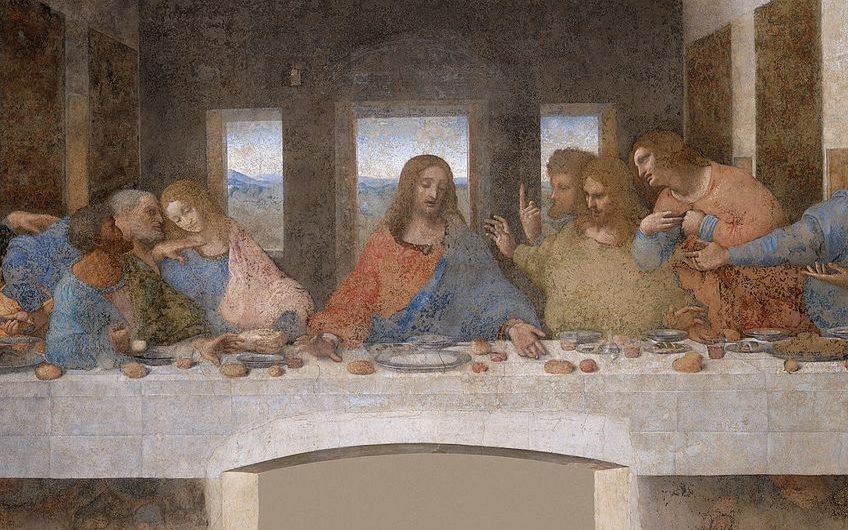
The Last Supper shows Jesus and his twelve Apostles sitting at a long table enjoying their last supper together. In this evening Jesus announces that one of his friends would once betray him. If you look more closely you can see that some of the figures can be placed in a new position and they would still fit into the picture without causing any suspicious effect. Sadly most of the faces on the painting weren't completed by da Vinci.
... Previous: Pythagoras Back to Table of ContentsIsaac Newton
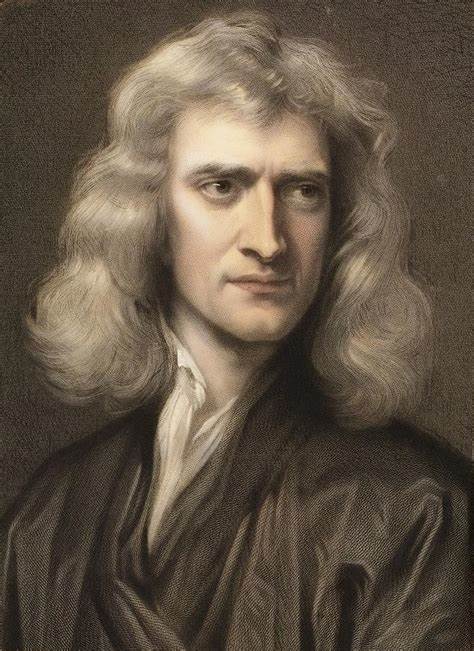
- December 25, 1642 - March 20, 1726/27
- Born in Lincolnshire, England- deceased: Kensington, Middlesex, Great Britain
- Was an English mathematician, physicist, astronomer, alchemist, theologian and author
Inventions
Splitting the colors
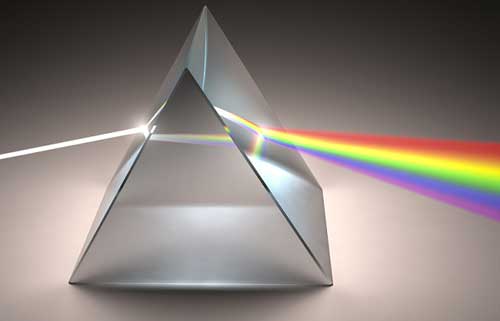
In 1666, Newton discovered that there is more than just one light color. He observed how colors would react when put through a prism and he saw that they split to the colors of the rainbow. With this observation he proved that light has colors and different spectrums. These days astrophysicists can use these spectrums to predict the energy and distance of light sources in the universe. With this method there can be found exoplanets, unknown stars and so much more.
...The apple on his head

The whole world knows who Isaac Newton is and that he discovered and proved the earth's gravity. Gravity explains why because of the mass of the earth, objects get drawn back to the earth's surface.
...The three universal laws of motion
With the three universal laws of motion, Newton managed to explain why an object is moving with mathematics.
The three laws are:
- A body remains at rest, or in motion at a constant speed in a straight line, unless acted upon by a force.
- The net force on a body is equal to the body's acceleration multiplied by its mass or, equivalently, the rate at which the body's momentum changes with time.
- If two bodies exert forces on each other, these forces have the same magnitude but opposite directions (Latin: actio = reactio).
Fun Facts
A lot of people don't know that Isaac Newton is an actual Knight of England. He got knighted by Queen Anne when she paid a visit to Trinity College, Cambridge. After Newton's fulfilled life he was buried in Westminster Abbey, England along with other big names of his time.
Previous: Leonardo da Vinci Back to Table of ContentsCharles Darwin
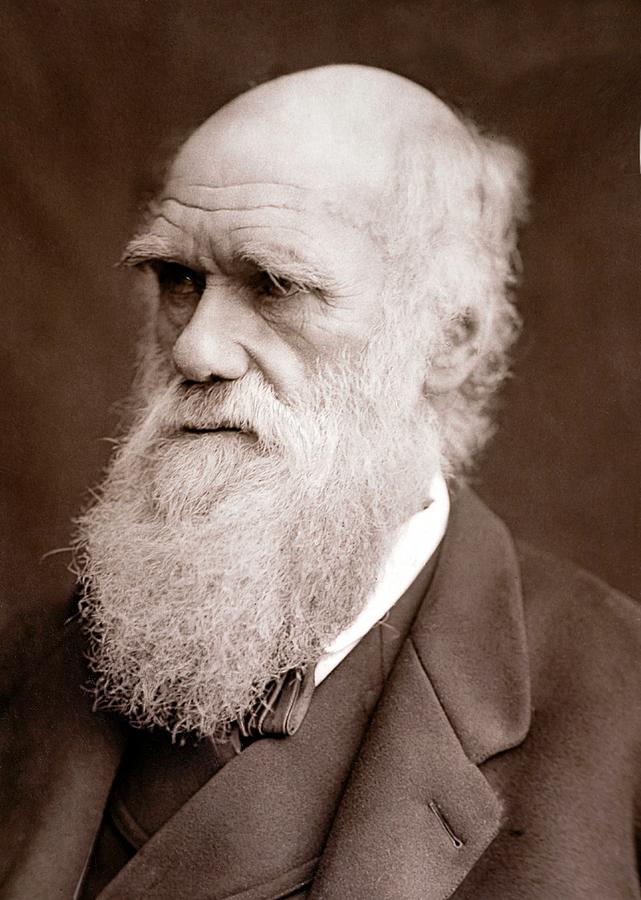
- Was born in 1809 in Shrewsbury, died in 1882, Down House, Kent, England
- Became the most famous British naturalist, biologist and geologist
Charles Darwin's Life
Charles Darwin was born in 1809 in Shrewsbury, England. At the age of 16 he enrolled at Edinburgh University to earn a medical degree, mostly because his father had his hopes up for his son to become a remarkable doctor. There was just one problem - Charles wasn't interested in medical studies. He would rather learn about natural history . Maybe a reason why he didn't want to become a doctor was that he couldn't see blood without getting stomachache. At the age of 22 he embarked on a voyage aboard a ship of the British Royal Navy, the HMS Beagle, employed as a naturalist. On his journey around the world he observed and collected a lot of different plants, rocks, fossils and animals. Darwin's most groundbreaking observations were on the Galapagos Islands (More about them in "Discoveries"). After his world trip Ch arles Darwin continued his work and with his thoughts about "natural selection" and the publishing of "On the Origin of Species" he became the scientific father of evolution. After his death he was buried in Westminster Abbey in London, England.
...Discoveries
Natural Selection

After journeying the world Darwin asked himself questions about how species could change their form and change over time. For example on the Galapagos Islands he discovered that on every island part there was the same bird species but with different beaks.One were perfectly shaped for cracking nuts and other ones were made for picking up insects or eating different kinds of fruits. Each one of the birds wa s perfect in their own eating style. Another example would be the lions in Africa. Just the ones who are strong enough can survive because they have to hunt down their prey. If they weren't strong the lions would starve to death. The dominant live and the weak die - that's the goal of natural selection.
...On the Origin of Species
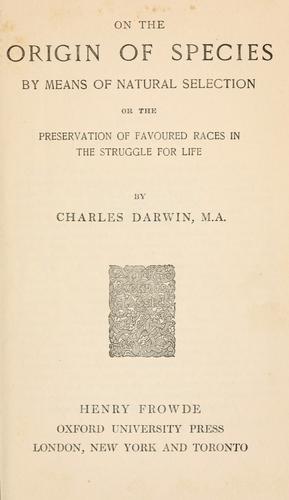 This book published on November 22, 1859 was the reason why everybody knows Charles Darwin these days. In his work he explained the evolution of species and how new ones are created.
This book published on November 22, 1859 was the reason why everybody knows Charles Darwin these days. In his work he explained the evolution of species and how new ones are created.
- Every species is fertile enough that if all offspring survived to reproduce, the population would grow (fact).
- Despite periodic fluctuations, populations remain roughly the same size (fact).
- Resources such as food are limited and are relatively stable over time (fact)
- A struggle for survival ensues (inference)
- Individuals in a population vary significantly from one another (fact).
- Much of this variation is heritable (fact).
- Individuals less suited to the environment are less likely to survive and less likely to reproduce; individuals more suited to the environment are more likely to survive and more likely to reproduce and leave their heritable traits to future generations, which produces the process of natural selection (fact)
- This slowly effected process results in populations changing to adapt to their environments, and ultimately, these variations accumulate over time to form new species (inference)